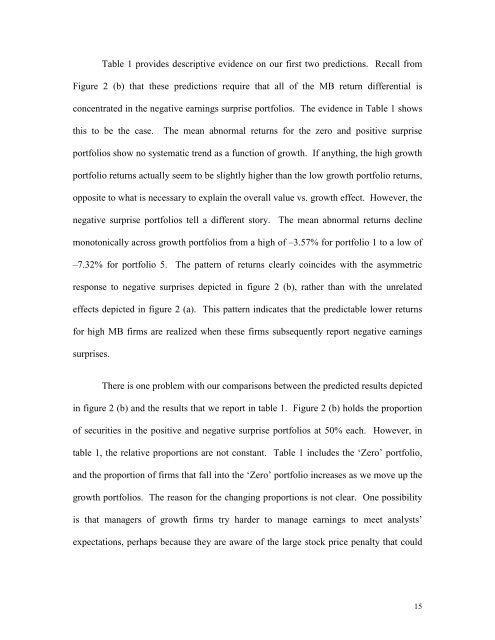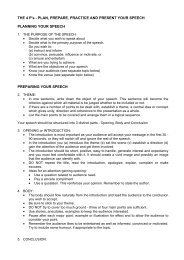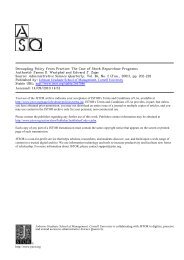Earnings Surprises, Growth Expectations, and Stock Returns:
Earnings Surprises, Growth Expectations, and Stock Returns:
Earnings Surprises, Growth Expectations, and Stock Returns:
You also want an ePaper? Increase the reach of your titles
YUMPU automatically turns print PDFs into web optimized ePapers that Google loves.
Table 1 provides descriptive evidence on our first two predictions. Recall from<br />
Figure 2 (b) that these predictions require that all of the MB return differential is<br />
concentrated in the negative earnings surprise portfolios. The evidence in Table 1 shows<br />
this to be the case. The mean abnormal returns for the zero <strong>and</strong> positive surprise<br />
portfolios show no systematic trend as a function of growth. If anything, the high growth<br />
portfolio returns actually seem to be slightly higher than the low growth portfolio returns,<br />
opposite to what is necessary to explain the overall value vs. growth effect. However, the<br />
negative surprise portfolios tell a different story. The mean abnormal returns decline<br />
monotonically across growth portfolios from a high of –3.57% for portfolio 1 to a low of<br />
–7.32% for portfolio 5. The pattern of returns clearly coincides with the asymmetric<br />
response to negative surprises depicted in figure 2 (b), rather than with the unrelated<br />
effects depicted in figure 2 (a). This pattern indicates that the predictable lower returns<br />
for high MB firms are realized when these firms subsequently report negative earnings<br />
surprises.<br />
There is one problem with our comparisons between the predicted results depicted<br />
in figure 2 (b) <strong>and</strong> the results that we report in table 1. Figure 2 (b) holds the proportion<br />
of securities in the positive <strong>and</strong> negative surprise portfolios at 50% each. However, in<br />
table 1, the relative proportions are not constant. Table 1 includes the ‘Zero’ portfolio,<br />
<strong>and</strong> the proportion of firms that fall into the ‘Zero’ portfolio increases as we move up the<br />
growth portfolios. The reason for the changing proportions is not clear. One possibility<br />
is that managers of growth firms try harder to manage earnings to meet analysts’<br />
expectations, perhaps because they are aware of the large stock price penalty that could<br />
15







